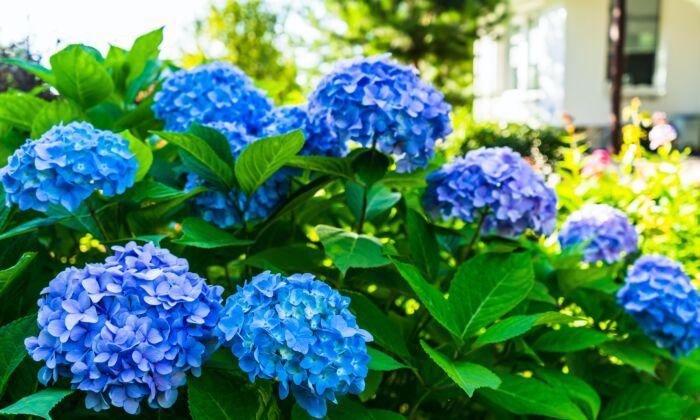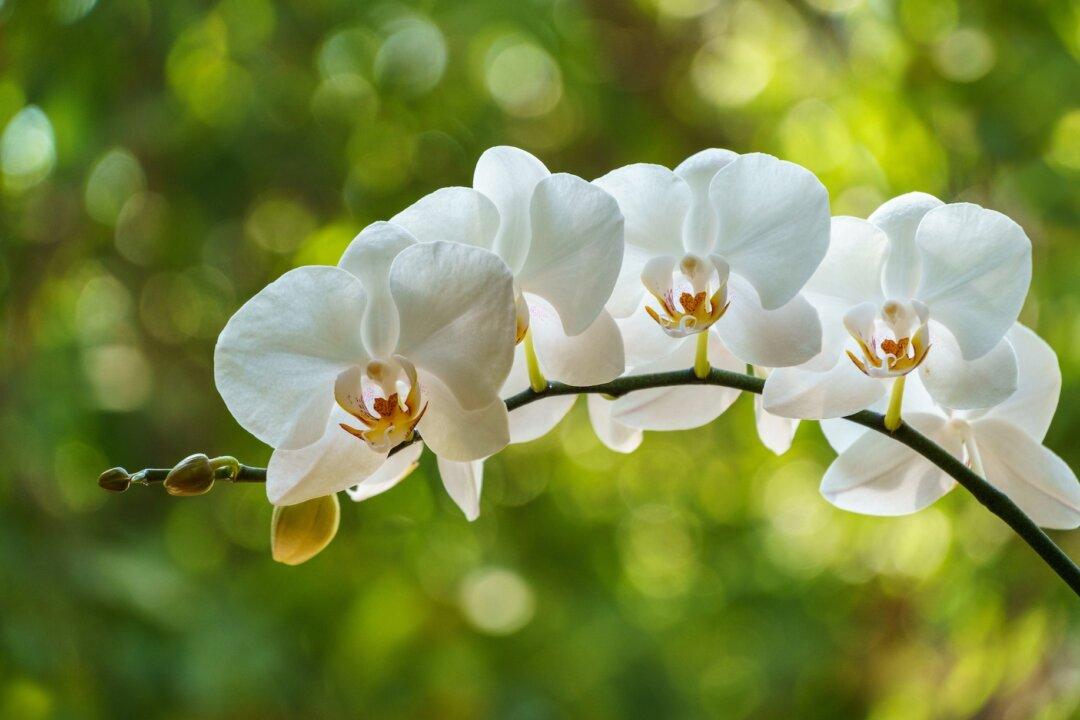There are two species of hydrangeas that can have blue flowers. Hydrangea macrophylla (bigleaf hydrangea) is native to the coastal areas of Japan. Hydrangea serrata (mountain hydrangea) is native to the mountainous areas of Japan but is much less common in the United States than the big-leaf hydrangea. They are so similar that some people think they are one species, but the mountain hydrangea has hardier flower buds and can bloom better in the northern states.
No white-blooming hydrangea will turn blue no matter what you do. The white flowers may turn pink or red as they age but not blue.
All the pink- to purple- to blue-colored hydrangeas develop their color based on how much aluminum is available to the roots. The aluminum is more soluble in soil that is acidic, and the more aluminum the soil releases to the plant, the bluer the flowers will be.
In areas where the soil is limestone-based and the well water comes from limestone aquifers, you should expect the flowers to turn pinker as the plant gets older and establishes more roots into the surrounding high pH soil. Even lake and river water can have a high enough pH to turn hydrangea flowers pink.
Garden soils with lots of organic matter and lots of peat moss are usually a little bit more acidic than a neutral pH of around 7. These soils will produce lavender or purple flowers. To get a real solid blue, the pH needs to drop down to around 4.5.
If your plants are pink, you have a neutral or basic pH and not an acidic soil. You will need to test the soil’s pH to find out exactly what it is. Test kits are available at garden centers. Sometimes, your local extension service knows of companies that will test your soil for pH, nitrogen, phosphorus, potassium, and lots of other nutrients. If you have hydrangeas in two different beds, you will need to have both soils tested.
To lower the soil’s pH, you need to add aluminum sulfate to the soil around the hydrangeas. It will burn the roots and kill the plants if too much is used, so follow the label directions carefully. It can be a few-year process to get the soil to the proper pH for blue flowers. To maintain the acidity in the soil in regions where the water has a high pH, you will need to add small amounts every year. Too much nitrogen and too much phosphorus will also promote the pink color you don’t want, so don’t use too much fertilizer.
If you have a blue hydrangea and want it to have pink flowers, you need to raise the pH of your soil. Adding lime to your soil can do this. Lime is less deadly to plants. Don’t add the lime more often than about once every three or four months. You will need to raise the soil’s pH to at least 6.5 to get out of the purple tones and into the pink. Above a pH of 7 will get a nice vivid pink. A pH in the 5.5 range will be purple, and in the 4.5 range will be blue.






